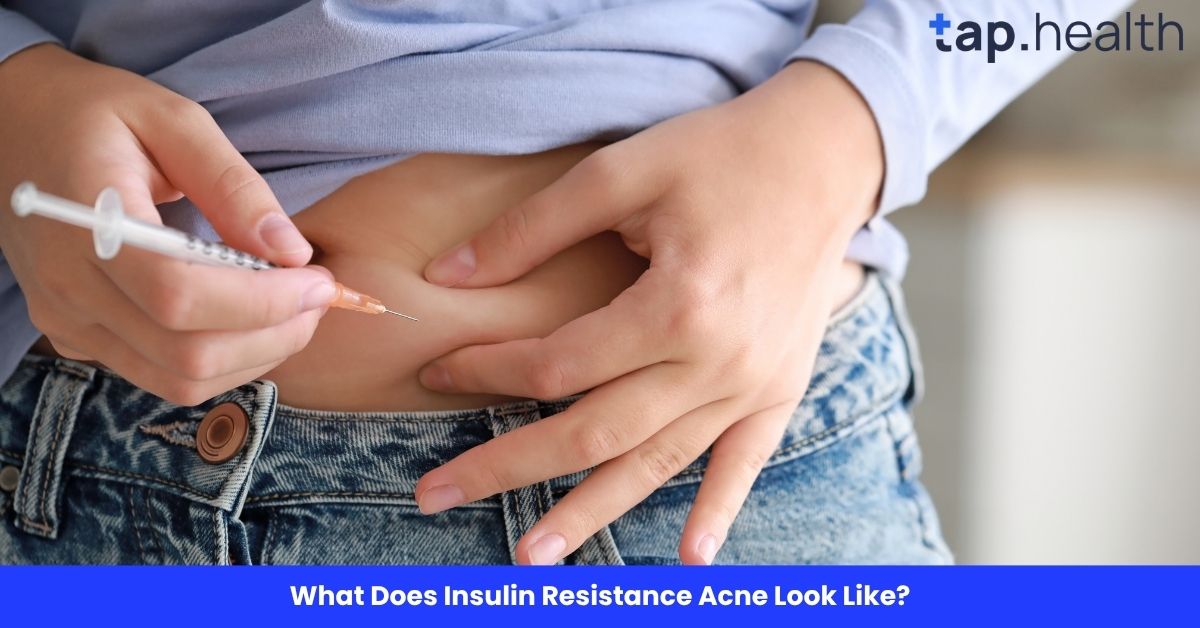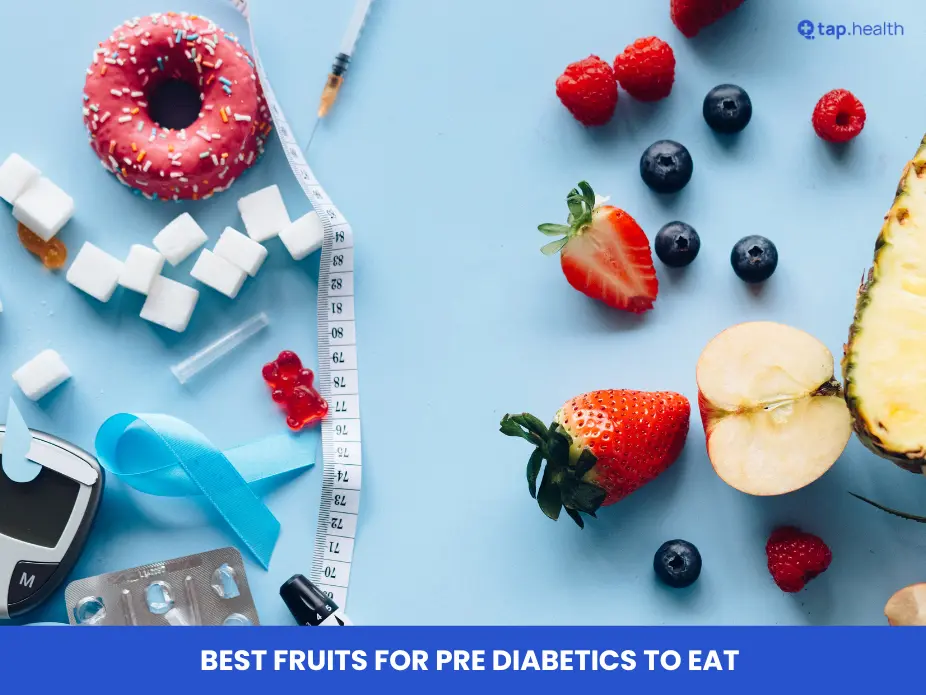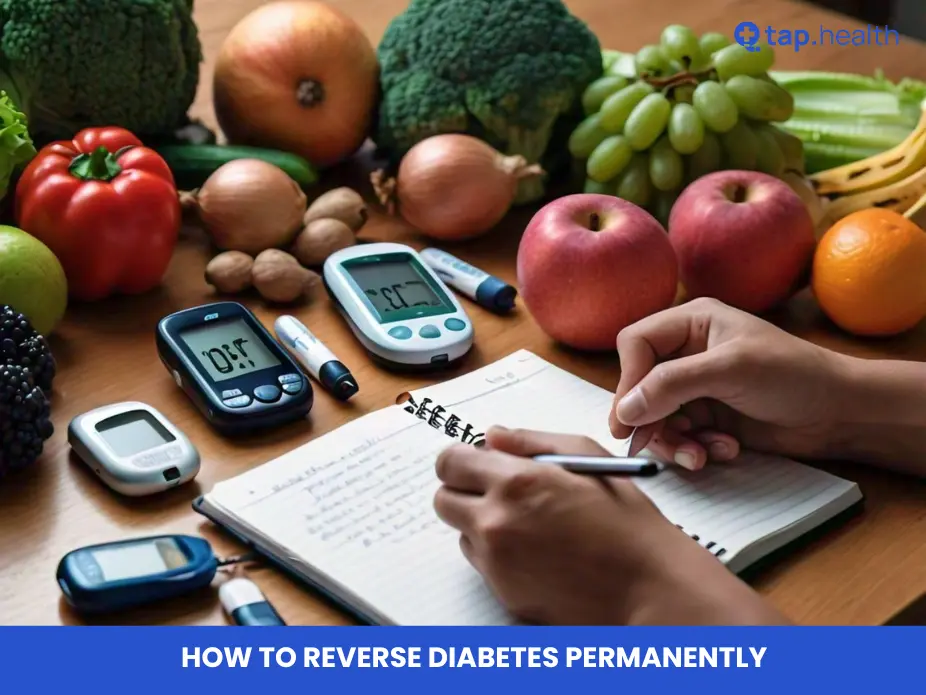Acne is a common skin condition that can affect anyone, regardless of age, gender, or lifestyle. However, if you have insulin resistance, you might notice your acne is more persistent or severe. But what exactly does insulin resistance acne look like, and how is it different from other types of acne? In this article, we will explore the appearance of acne caused by insulin resistance, why it occurs, and how you can manage or treat it effectively.
What is Insulin Resistance?
Before we dive into how insulin resistance affects acne, let’s first understand what insulin resistance is and how it works in the body.
The Role of Insulin in Your Body
Insulin is a hormone produced by the pancreas that helps regulate blood sugar (glucose) levels. After eating, insulin helps your cells absorb glucose for energy. In people with insulin resistance, the body’s cells become less responsive to insulin, meaning the cells don’t absorb glucose properly. As a result, the pancreas produces more insulin to try to make up for this resistance, leading to higher insulin levels in the blood.
What Happens in Insulin Resistance?
When insulin resistance occurs, your blood sugar levels can remain elevated. This can lead to several health complications, including Type 2 diabetes and hormonal imbalances. One of the lesser-known effects of insulin resistance is its impact on skin health, particularly acne.
What Does Insulin Resistance Acne Look Like?
Insulin resistance acne tends to have some distinct characteristics that make it different from other types of acne. Understanding these features can help you identify if your acne might be related to insulin resistance and allow you to take steps to manage it.
1. Acne on the Lower Face and Jawline
One of the most noticeable features of insulin resistance acne is its tendency to appear on the lower face, especially along the jawline, chin, and neck. This is often in contrast to acne caused by other factors, which may appear on the forehead, cheeks, or nose.
The reason insulin resistance acne appears in these areas is because of hormonal fluctuations. Insulin resistance often leads to increased production of androgens, male hormones present in both men and women. These hormones increase the size and activity of the sebaceous (oil) glands, which can lead to clogged pores and acne.
2. Deep, Cystic Pimples
Insulin resistance acne often appears as deep, cystic pimples rather than small whiteheads or blackheads. Cystic acne occurs when hair follicles become deeply clogged with oil, dead skin cells, and bacteria, causing large, painful lumps under the skin. These types of pimples are harder to treat and often leave scars if not properly managed.
3. Persistent Breakouts
Unlike the occasional breakout many people experience, insulin resistance acne is often persistent and recurrent. This means that once the acne clears up, new breakouts may occur regularly, making it difficult to get clear skin. This persistence is due to the chronic inflammation and hormonal imbalance caused by insulin resistance.
4. Skin Texture Changes
In addition to the acne itself, you may notice changes in your skin texture. People with insulin resistance may have thicker skin with an increased tendency to develop hyperpigmentation (dark spots) after pimples heal. These changes can make your skin appear uneven and rough, which is common in those with long-term acne caused by insulin resistance.
What Causes Acne in Insulin Resistance?
To understand why insulin resistance leads to acne, it’s important to know how insulin affects your skin. Several factors contribute to acne in people with insulin resistance.
1. Increased Oil Production (Sebum)
One of the primary causes of insulin resistance acne is an increase in oil production. High insulin levels stimulate the sebaceous glands to produce more sebum, which is the oily substance that helps protect the skin. However, when too much oil is produced, it can clog the pores, creating an environment for acne-causing bacteria to thrive.
2. Hormonal Imbalance
Insulin resistance often causes hormonal imbalances, particularly involving androgens. Androgens are male hormones that are present in both men and women, but they are produced in higher quantities when insulin resistance occurs. These hormones cause an increase in sebum production, contributing to clogged pores and acne breakouts.
3. Chronic Inflammation
Chronic inflammation is another key factor. Insulin resistance can cause low-grade inflammation throughout the body, including in the skin. This inflammation can worsen acne by irritating the skin and making it more prone to breakouts.
4. Insulin and Blood Sugar Fluctuations
When blood sugar levels fluctuate due to insulin resistance, the body produces more insulin to try to regulate glucose levels. This increase in insulin can lead to an imbalance in other hormones, triggering acne. Elevated insulin also increases IGF-1 (Insulin-Like Growth Factor 1), which can stimulate the sebaceous glands and exacerbate acne.
How to Treat Acne Caused by Insulin Resistance
Now that we understand what insulin resistance acne looks like and why it occurs, let’s discuss how to treat it effectively. Managing insulin resistance and acne simultaneously requires a combination of lifestyle changes, skincare routines, and medical treatments.
1. Address the Root Cause: Improve Insulin Sensitivity
The most effective way to reduce insulin resistance acne is to treat the underlying insulin resistance. By improving insulin sensitivity, you can lower the amount of insulin in your body and reduce the hormonal imbalances that contribute to acne.
1.1. Adopt a Low-Glycemic Diet
A low-glycemic diet helps regulate blood sugar levels and insulin production. High-glycemic foods, such as sugary snacks and refined carbohydrates, cause blood sugar spikes that worsen insulin resistance and acne. Instead, focus on foods with a low glycemic index, such as whole grains, legumes, vegetables, and lean proteins.
1.2. Exercise Regularly
Regular exercise improves insulin sensitivity and helps control blood sugar levels. Aim for at least 30 minutes of moderate physical activity most days of the week. Activities like walking, swimming, cycling, and strength training can help your body use insulin more efficiently and reduce acne.
1.3. Maintain a Healthy Weight
Losing weight, particularly if you are overweight or obese, can significantly improve insulin sensitivity and reduce acne. Weight loss can help balance hormones, reduce inflammation, and alleviate many of the issues caused by insulin resistance.
1.4. Consider Medication
In some cases, medications may be needed to improve insulin sensitivity. Metformin, a common drug used for Type 2 diabetes, is often prescribed to help manage insulin resistance. Additionally, medications like spironolactone (an anti-androgen) can help regulate hormone levels and reduce acne.
2. Skincare Treatments for Acne
While addressing insulin resistance is essential, it’s also important to treat the acne directly. Here are some skincare treatments that can help manage acne caused by insulin resistance.
2.1. Topical Treatments
- Benzoyl Peroxide: This helps kill acne-causing bacteria and reduce inflammation in the skin.
- Salicylic Acid: A beta-hydroxy acid that exfoliates the skin, helping to clear clogged pores and reduce acne.
- Retinoids: These vitamin A derivatives increase skin cell turnover and help prevent clogged pores, making them highly effective for treating persistent acne.
2.2. Oral Medications
For more severe acne, oral medications may be necessary:
- Antibiotics (Doxycycline, Minocycline): These reduce inflammation and control bacteria on the skin.
- Oral Contraceptives: Birth control pills regulate hormones and are particularly helpful for women with acne caused by hormonal imbalances, including those with insulin resistance.
- Spironolactone: This medication blocks androgens and reduces sebum production, making it effective for hormonal acne.
2.3. Professional Treatments
For cystic or stubborn acne, professional treatments might be required:
- Chemical Peels: Help exfoliate the skin and reduce acne.
- Laser Treatments: Target the bacteria that cause acne and reduce oil production in the skin.
- Microneedling: Stimulates collagen production and helps reduce acne scarring.
3. Lifestyle Changes to Improve Skin Health
In addition to medical treatments and dietary changes, making some simple lifestyle adjustments can help improve your skin and manage insulin resistance.
3.1. Reduce Stress
Stress is a significant trigger for both insulin resistance and acne. High stress levels can increase cortisol production, leading to more sebum production and breakouts. Try stress-relief techniques like meditation, yoga, and deep breathing exercises to help keep both conditions under control.
3.2. Get Enough Sleep
Sleep is essential for overall health, including insulin sensitivity and skin health. Aim for 7-9 hours of sleep per night to help your body regulate hormones and repair skin.
3.3. Stay Hydrated
Drinking plenty of water helps maintain healthy skin and prevents dehydration, which can exacerbate acne. Aim to drink at least 8 glasses of water per day.
Real-Life Scenario
Riya, a 28-year-old office worker, noticed small, red pimples consistently appearing along her jawline. Despite using over-the-counter acne creams, the acne persisted. After consulting a dermatologist, she discovered that her diet high in sugary foods and frequent late-night snacks was contributing to insulin spikes, causing hormonal acne. By adjusting her diet and monitoring her blood sugar, she noticed improvements in her skin within a few weeks.
Expert Contribution
Dermatologists and endocrinologists explain that insulin resistance can increase androgen hormones, which in turn stimulate excess oil production in skin pores, leading to acne. Dr. Smith, an endocrinologist, emphasizes:
“Acne on the lower face in adults is often a sign of underlying metabolic issues like insulin resistance. Treating the root cause, such as diet and blood sugar regulation, is more effective than just topical creams.”
Recommendations Grounded in Proven Research and Facts
- Monitor your diet: Reduce high-glycemic foods like sweets, white bread, and sugary drinks that spike insulin.
- Exercise regularly: Physical activity improves insulin sensitivity and can reduce hormonal acne.
- Maintain a skincare routine: Use gentle cleansers, non-comedogenic moisturizers, and topical treatments as advised by a dermatologist.
- Consult a healthcare professional: Blood tests for insulin and glucose can confirm insulin resistance.
- Consider lifestyle changes: Adequate sleep, stress management, and balanced meals are crucial for both skin and metabolic health.
How Tap Health Helps People with Diabetes
Tap Health is an AI-powered diabetes care app designed to make managing your health simple and practical. Tailored for Indian users, it helps track blood sugar levels, monitor carbohydrate intake, and maintain overall wellness — all from one convenient app.
Ways Tap Health Simplifies Diabetes Management
Managing diabetes can feel overwhelming, but Tap Health provides tools and insights to make daily care easier:
Accurate Meal Tracking – Log your meals or take a photo, and the app calculates carbohydrates, calories, and portion sizes, including Indian foods.
Blood Sugar Monitoring – Keep track of your glucose readings and see how your food and lifestyle choices affect your levels over time.
Timely Alerts – Get reminders for medications, meals, and glucose checks so you can follow your routine consistently.
Personalized Health Insights – The app analyzes your data and offers recommendations for diet, activity, and better blood sugar control.
Indian Meal Support – Access a wide selection of Indian recipes, regional dishes, and meal plans designed to suit your preferences.
Progress Visualization – Track your HbA1c results and glucose trends with clear, easy-to-read charts.
Expert Guidance – Connect directly with doctors and dietitians for professional advice and personalized care.
Frequently Asked Questions (FAQs) on What Does Insulin Resistance Acne Look Like?
1. Is insulin resistance the main cause of acne?
Insulin resistance can contribute to acne, especially by increasing hormone levels that affect oil production in the skin. However, other factors such as genetics, diet, and stress can also play a role in acne development.
2. How can I tell if my acne is caused by insulin resistance?
If your acne appears around the jawline, chin, or neck and is persistent or cystic, it could be related to insulin resistance. Other signs of insulin resistance, such as weight gain, fatigue, or dark patches of skin, may also suggest a connection.
3. What foods should I avoid to reduce insulin resistance and acne?
Avoid high-glycemic foods like sugary snacks, refined carbohydrates, and processed foods. Instead, focus on whole grains, vegetables, lean proteins, and healthy fats to improve insulin sensitivity and manage acne.
4. Can medications for insulin resistance help with acne?
Medications like metformin and spironolactone can help improve insulin sensitivity and regulate hormone levels, which may reduce acne. Always consult your doctor before starting any new medications.
5. Is it possible to prevent insulin resistance acne?
While some factors are out of your control, you can reduce your risk of insulin resistance acne by maintaining a healthy weight, eating a balanced diet, exercising regularly, managing stress, and addressing any underlying insulin resistance with the help of your doctor.
Conclusion
Acne caused by insulin resistance can be persistent and frustrating, but it is manageable with the right approach. By addressing the root cause—insulin resistance—through diet, exercise, medication, and lifestyle changes, you can improve both your skin and overall health. With the proper treatments and a comprehensive plan, you can reduce acne breakouts and achieve clearer, healthier skin. If you’re struggling with acne and suspect insulin resistance may be a factor, talk to your healthcare provider to develop a personalized treatment plan that works for you.



